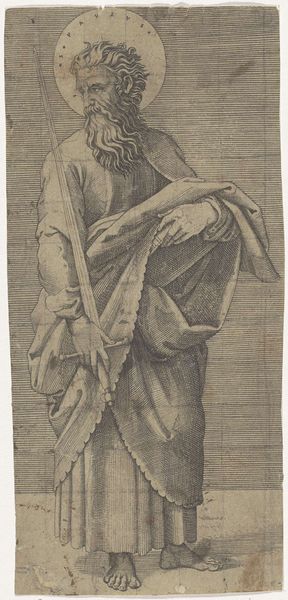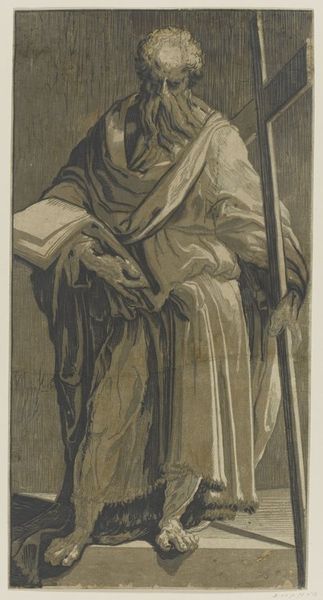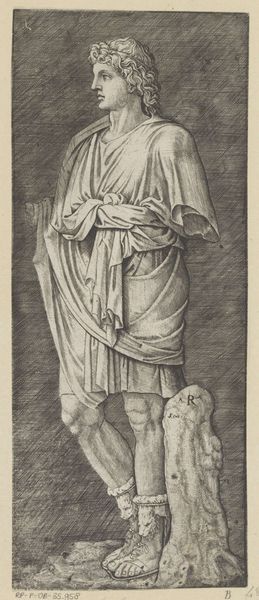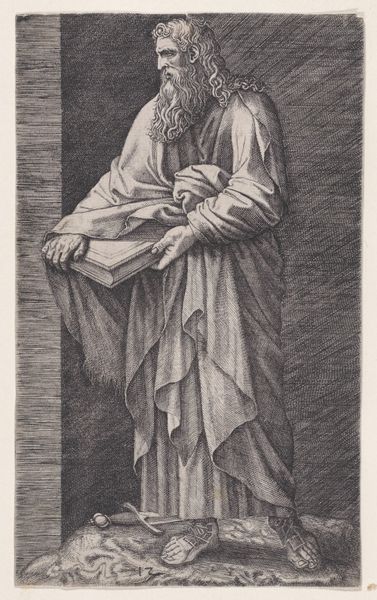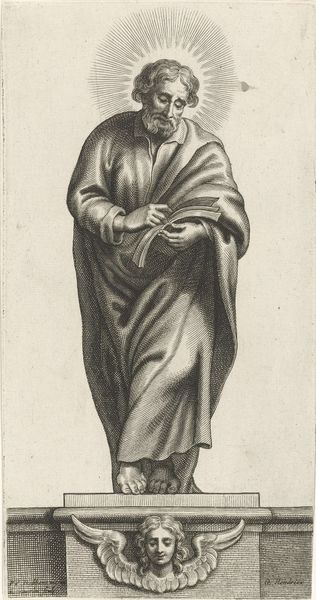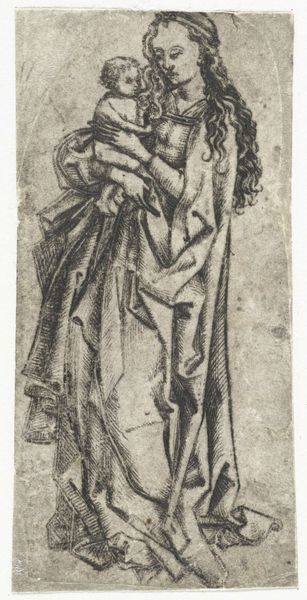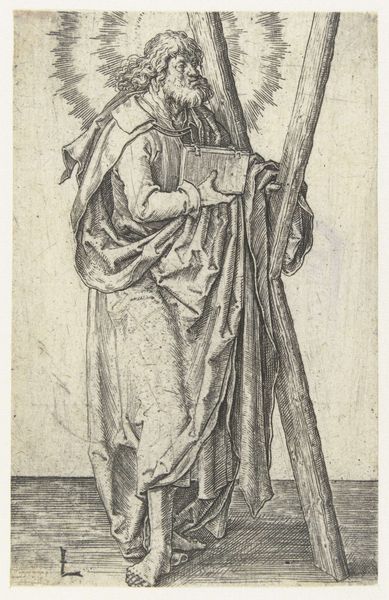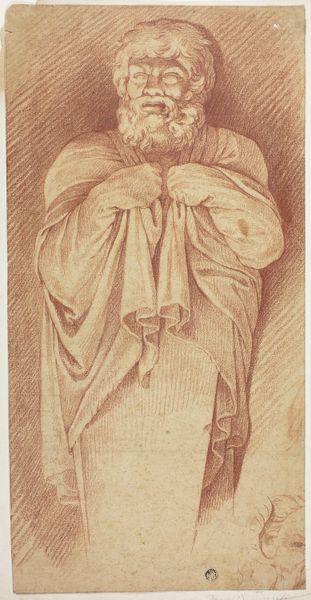
print, engraving
#
portrait
# print
#
old engraving style
#
figuration
#
11_renaissance
#
portrait drawing
#
academic-art
#
italian-renaissance
#
engraving
Dimensions: height 169 mm, width 80 mm
Copyright: Rijks Museum: Open Domain
Curator: The piece before us is "Apostel Tomas" by Lambertus Suavius, an engraving created sometime between 1545 and 1548. The detail achieved in this print is remarkable for the period. Editor: My first impression is a sense of solemnity, and almost...distrust? His expression, that furrowed brow – it’s compelling. It makes me wonder, what's made him so pensive? Curator: Thomas, often known as "Doubting Thomas," carries the weight of skepticism, doesn’t he? The pointing finger can represent a gesture of authority but also serves to illustrate his doubting questions within the Gospel accounts. Notice how he holds the book, possibly Scripture, yet his gaze drifts away from it. The positioning makes me reflect on the human struggle with faith and certainty, which continues resonating across time. Editor: Yes, that gesture is key! It directs the viewer not just towards what he’s contemplating, but arguably outwards, challenging them to question too. I think placing this sort of internal struggle within a publicly reproducible medium like engraving adds another layer. It democratizes doubt, if that makes sense. Suddenly, individual faith becomes something negotiated within a community. How revolutionary! Curator: It does add complexity. Engravings like this facilitated wider dissemination of religious imagery beyond the elite. Through these portraits, religious figures were reimagined, imbued with tangible human emotions for an evolving society. This engraving bridges Renaissance artistry with nascent democratic ideals via replicated imagery and shared contemplations, which marks an exciting stage in cultural awareness. Editor: Absolutely. The accessibility of print allows for questioning and conversation in society at large, with engravings leading the charge. The image then moves out of sacred places and enters worldly life. Looking closer, notice the academic style evident in his garments and classical architecture serving as a stage, both speaking to that era's embrace of humanist thought. I love seeing the dialogue between religious imagery, humanist thinking and artmaking as the world transformed! Curator: Indeed, it captures that intersection perfectly. Seeing "Apostel Tomas," and his enduring influence, invites reflection not just upon belief, but upon the public space images occupied and continue to hold today. Editor: Beautifully said. It leaves me contemplating the enduring power of symbols, the questioning mind, and, more so, the power of art to invite everyone to ask difficult questions.
Comments
No comments
Be the first to comment and join the conversation on the ultimate creative platform.

